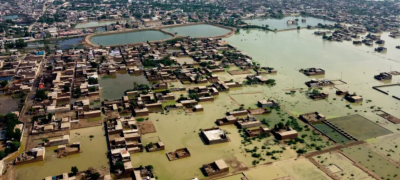The police department in Khyber Pakhtunkhwa (KP) has incorporated cutting-edge surveillance technologies to enhance its defense mechanisms against militant activities. The adoption of advanced high-resolution thermal imaging (TI) surveillance drones enables the police to effectively monitor routes used by militants for infiltration, even in rugged terrains and during nighttime conditions.
In response to a recent attack on an armored personnel carrier (APC) in Lakki Marwat, which resulted in casualties, the police introduced jamming devices to thwart potential improvised explosive device (IED) attacks. Over the past couple of years, KP’s police force has faced attacks across various districts, leading to significant casualties among officers.
Also Read: Another drug-laden drone has crashed near Lahore.
The integration of TI cameras within remote police stations and posts situated in vulnerable areas has proven to be highly effective in deterring multiple attacks. This not only bolsters the security of police installations but also enables the long-distance monitoring of suspicious activities by potential attackers. The Inspector General of Police (IGP), Akhtar Hayat Khan, affirmed the success of this approach, leading to the deployment of surveillance drones in remote regions to ensure constant vigilance and prompt response.
To further strengthen their operational capabilities, the police have deployed robust Armored Personnel Vehicles (APVs) and APCs designed to ensure secure transportation of personnel. These vehicles have been equipped with jamming technology to counter the threat of bomb attacks.
In recognition of existing security vulnerabilities, authorities have allocated Rs. 269 million to enhance the infrastructure of police stations throughout KP. In Peshawar’s red zone, a comprehensive security system incorporating features like face detection/recognition cameras, automatic number plate recognition (ANPR), e-tag readers, pop-up barriers, and turnstile gates has been introduced to prevent incidents akin to the attack at the police lines.
Furthermore, the Counter-Terrorism Department (CTD) of KP has undergone substantial reforms, including the appointment of senior officers and the expansion of operational scope. Leadership within the CTD has been reinforced, and its endeavors to combat terrorism and counter-terror financing have been intensified. To support district police officers in their operations, significant districts have received additional appointments of Superintendent of Police (SP).
In summary, the Khyber Pakhtunkhwa police’s proactive adoption of advanced surveillance technologies, along with the implementation of enhanced security measures and organizational reforms, collectively bolster the region’s overall security efforts against militant activities and terrorist threats.









